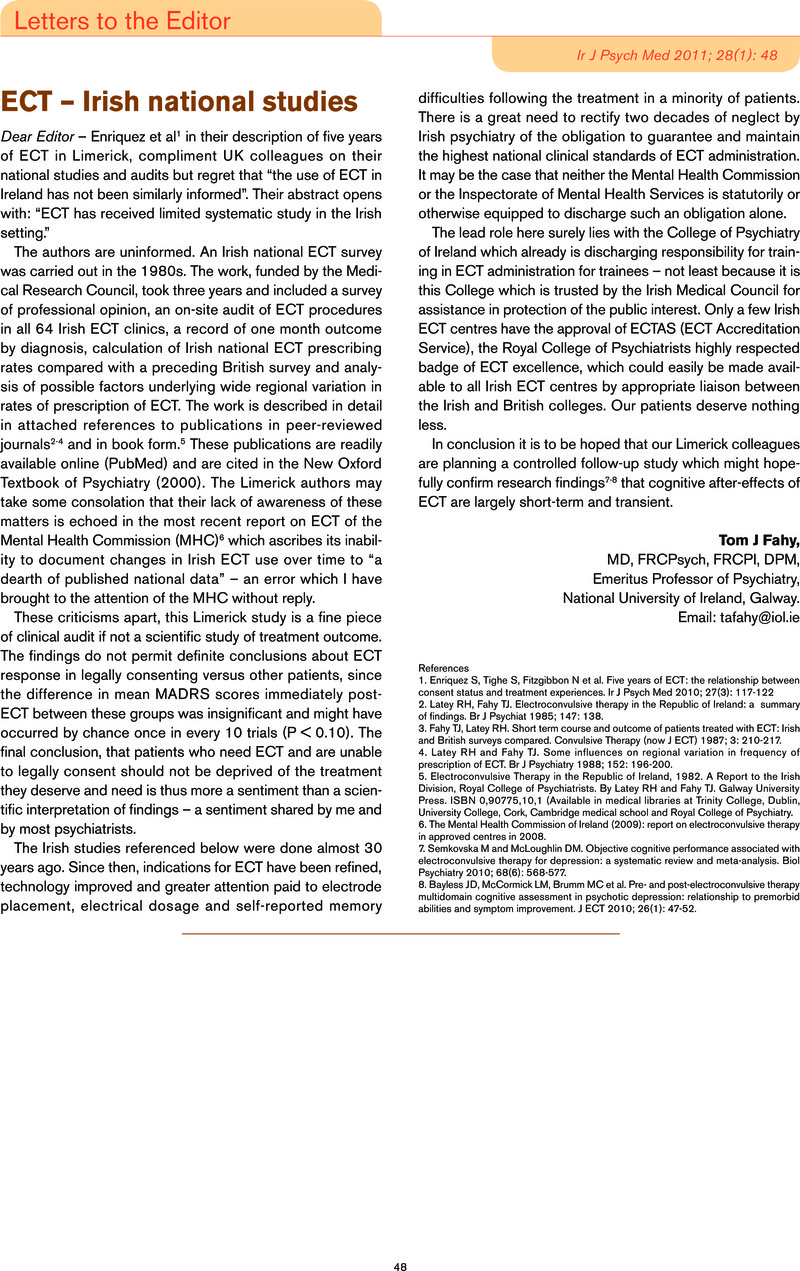5.Electroconvulsive Therapy in the Republic of Ireland,
1982. A Report to the Irish Division, Royal College of Psychiatrists. By Latey RH and Fahy TJ. Galway University Press. ISBN 0,90775,10,1 (Available in medical libraries at Trinity College, Dublin, University College, Cork, Cambridge medical school and Royal College of Psychiatry.
Google Scholar 